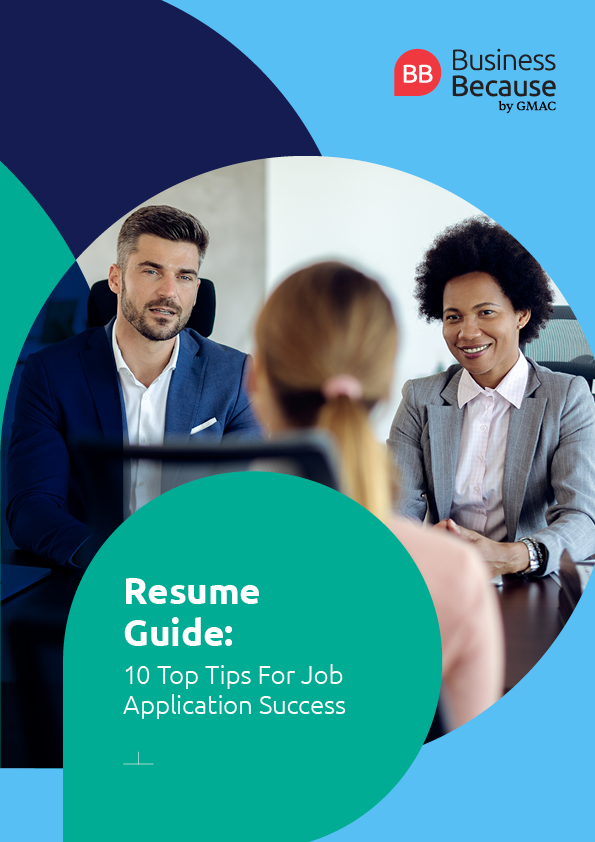After you've spent hours crafting the perfect resume, the last thing you want is to spot a mistake seconds after you've submitted it to your dream job. That's where proofreading comes in—checking your resume can help prevent unnecessary errors.
It's easy to overlook mistakes when reading your own work. A second pair of eyes, therefore, can be very useful—to offer a fresh perspective, spot typos, and give feedback on tone, style, and structure.
However, you may not have a proofreader or trusted friend on hand to review your hard work. Thankfully, there are ways you can proofread your resume yourself to make sure it's mistake-free and ready for submission.
Here are five smart ways you can proofread your resume yourself:
Download: BusinessBecause Resume Guide: 10 Tips for Application Success
1. Use text-to-speech
Often, the way text reads on paper can be different from how it sounds. As such, having your resume read out loud—by someone else or by a tool—can help you catch errors, spot awkward phrasing, and identify sentences that don't flow smoothly.
While it's unlikely that a recruiter will physically read your resume aloud, they will analyze it intensely, compare it, and may even cite parts of it in conversations with members of the hiring team. Therefore, making sure your resume sounds as good as it reads is crucial.
Text-to-speech (TTS) can be a valuable tool for proofreading your resume when no one is available to read it to you. Microsoft Word offers an easy-to-navigate TTS tool, Immersive Reader, which allows users to have their documents read aloud.
If you're looking to stand out, you could even offer recruiters an audio version of your resume using platforms such as TTSReader, which allows you to turn text, PDFs, and even webpages into an MP3 file. This can be particularly effective for jobs in creative industries, where employers often value innovation and imagination in resume design.
2. Print it out
Our brains tend to process information differently when reading from screens versus paper. Screen reading often leads to shallow or skim reading, which affects our comprehension and our ability to critically analyze the text. Reading exclusively on a screen may result in unnoticed errors, especially as exposure to blue light can trigger mental fatigue and reduce your proofreading effectiveness.
Meanwhile, research shows that paper facilitates deeper reading and learning. A 2024 meta-analysis of 49 studies revealed that students who read on paper consistently scored higher on comprehension tests than those who read the same material on screens. This gap is commonly referred to as the “screen inferiority effect”.
A simple way to avoid the screen inferiority effect when proofreading your resume is to print out a copy. Along with enhanced analysis, this gives you the physical space to make notes, highlight errors, and jot down suggestions.
Printing your resume also provides a tactile experience that can help boost focus.
3. Take a break
Sometimes, the most effective proofreading technique is simply taking a break. Stepping away for a few hours—or even overnight—allows you to reassess and re-evaluate. When you return to proofreading, it can feel like you're seeing your resume with fresh eyes, making it easier to spot improvements and overlooked mistakes.
Crafting a resume can be mentally taxing, and taking a break also helps reduce burnout, which can negatively impact your writing. A well-timed pause gives you the opportunity to refresh and recharge, equipping you with the energy and clarity needed to polish your resume.
Spend your break doing something that leaves you both relaxed and energized—reconnect with nature, go for a walk, spend time with friends or family, or engage in self-care activities like mindfulness and meditation.
4. Change the format
We all get used to reading in our favorite font, whether it's Times New Roman or Calibri. However, this familiarity can cause your brain to skim over errors that could cost you the job you're applying for.
Try changing the font or increasing the line spacing. This allows your brain to engage with the text in a new way, and mistakes that were previously invisible may suddenly stand out.
You may also discover that your resume looks better in an alternative font.
5. Use grammar checker & AI tools
Sometimes, you can get so caught up in making sure you’ve included everything—from experience to skills—that your grammar can get sidelined. Using tools such as Grammarly can help prevent this, ensuring your resume is well-structured and error-free.
The rise of artificial intelligence (AI) has also led to an increasing number of people using it to shape their resumes. A recent survey featured in the BusinessBecause 2025 Resume Guide revealed that out of 2,000 candidates, 46% used AI to help with job applications, with 22% saying they even used it to write their resume.
While AI should be used sparingly—to ensure your resume accurately reflects your lived experiences and remains authentic—it can still be a valuable tool. AI platforms such as ChatGPT can help you target the requirements listed in the job descriptions you're applying for.
To help you tailor your resume, try asking ChatGPT this prompt:
“Can you help me tailor my resume to this job description? Here is the job ad: [paste job description]. And here is my current resume: [paste resume]. Please highlight the skills and experience I should emphasize and suggest changes to better align with the role.”




